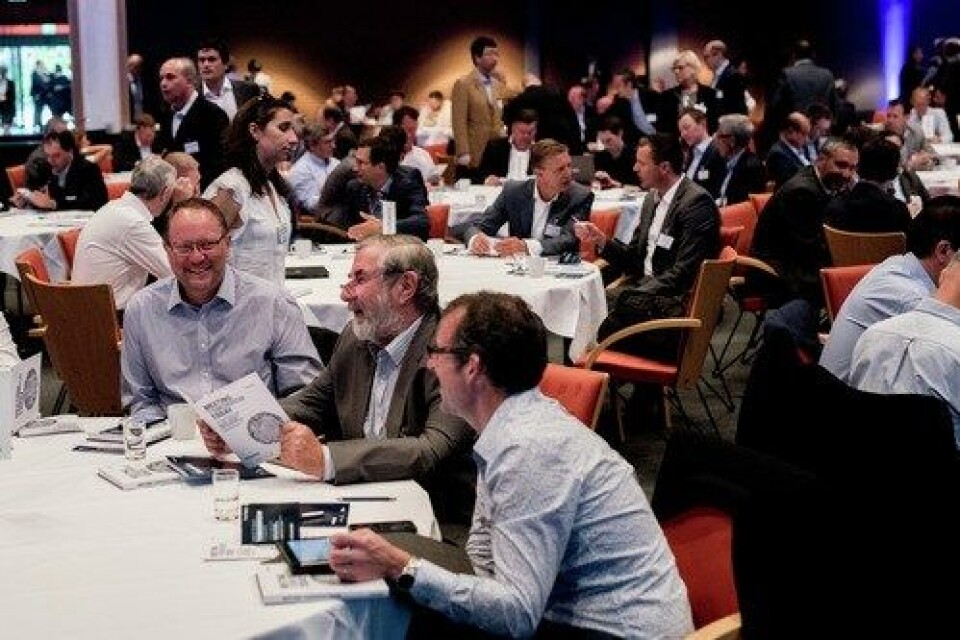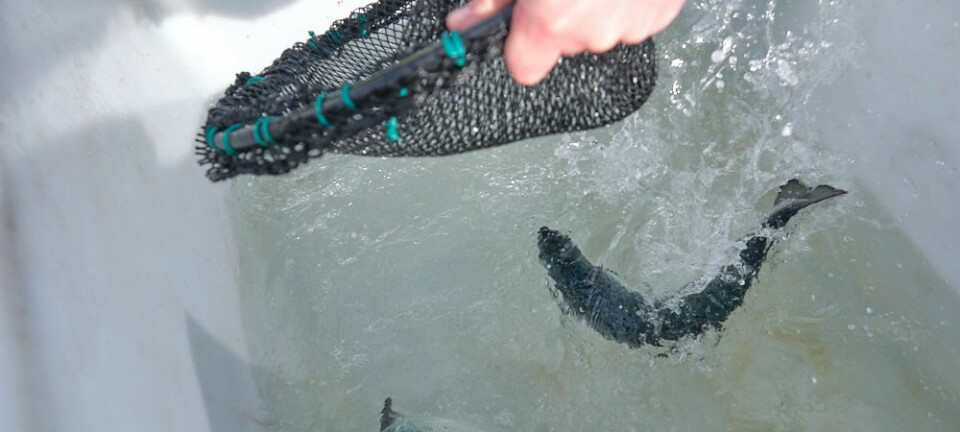
Collaboration is key
Aquavision: Many talks on the second and final day of the Stavanger conference emphasised collaboration and transparency as key factors in improving the sustainability standards in the industry.
Thanking more than 375 delegates from 35 countries for their participation in what has been a busy and enlightening conference programme, Skretting's MD, Steven Rafferty said there should be no doubt that aquaculture will be a major contributor of nutritious food for a global population that is forecast to grow to 9 billion people by 2050, but he also urged the industry to become much more forthcoming with transparent details about its actions and ambitions.
Health issues
Bernt Martinsen, Pharmaq’s Sales Director for Europe, Middle East, North America and Chile, elaborated on the need to work on sustainable fish disease controls, in order to pave the way for industry growth.
As for the great challenge posed by sea lice, Martinsen said the industry has to use a combination of “biological, pharmaceutical, vaccines, functional feeds, technology and reduced exposure, among other elements”. "
"Antibiotics are still cheaper than vaccines, so we must work on that," he added.
Working with industry
The manager of the NGO Bellona Aquaculture, Dr Solveig van Nes, delved into the role fish farmers play in the green revolution, noting that his organization works with farmers, not against them.
Dr Van Nes emphasized the importance of integrating different species in aquaculture projects, such as salmon and seaweed, in order to "convert the waste of one resource into the cultivation of another."
He also noted the decrease in carbon footprint of the salmon farming industry, which is less than that of the poultry, swine or cattle industries, and made a case for increasing fish consumption, which today is only 10-20% of the protein intake of society.
Ambition for sustainable growth
In a separate talk Yu Sato, chairman of Cermaq, said: “Aquaculture is an industry that fits well into the Mitsubishi Corporation strategy. Indeed, sustainable aquaculture, including salmon farming, holds the key to meeting many global challenges, including feeding the world’s growing population and helping public health. It also has a low carbon footprint and can provide many local jobs and other social benefits.”
DSM Innovation Award
This was won by the “Bugs Save the World” project, from Enviroflight, which grows black soldier fly larvae into a meal that can be used in fish feeds.
Glen Courtright, President and Founder of EnviroFlight, who accepted the award and a prize of €10,000, stated: “With over 9 billion people expected on the planet by 2050, environmentally responsible aquaculture solutions that drive improvements in the global food supply chain are necessary. EnviroFlight technology holds significant promise to realize the substantial potential of insect bioconversion to help meet this need.”
“When John Naisbitt, the bestselling ‘Megatrends’ author, was our keynote speaker 10 years ago, he told us that aquaculture has a great story to tell, but criticised us for not telling it. At the same time, he recognised that through the efforts of international NGOs, the public was drowning in criticism of aquaculture but starved of positive information from the industry. Fast forward to this year and we have heard many similar messages. I believe we still have a fantastic story to tell and we should all make the effort to become much more vocal,” he said.
Equally as important, said Rafferty, is the need for all industry players to collaborate more, to ensure that everyone is doing a good job, and to enhance the reputation of aquaculture globally.
“We are in the same water; we cannot operate alone. It is our obligation to look after this industry together, and that has been a constant theme running through this conference and many previous AquaVisions.”
One of the most pressing issues requiring industry attention is its response to the global megatrend of antimicrobial resistance (AMR). Rafferty echoed the plea made by Knut Nesse, CEO of Nutreco, at the start of AquaVision 2016, for collaboration across the entire aquaculture value chain to reduce the use of antibiotics.
“At Skretting and Nutreco, we see this as a genuine showstopper. I would therefore urge everyone to engage and look at what they are doing with regards to antibiotics, and let’s work together to remedy the situation,” he added.
Looking ahead he expressed their intention to move Cermaq closer to the consumer in the value chain and to build a new marketing focus to learn more about their needs. To which end, it is in the process of setting up new sales organisation in Asia, Europe, Latin America and North America, he revealed.























































